
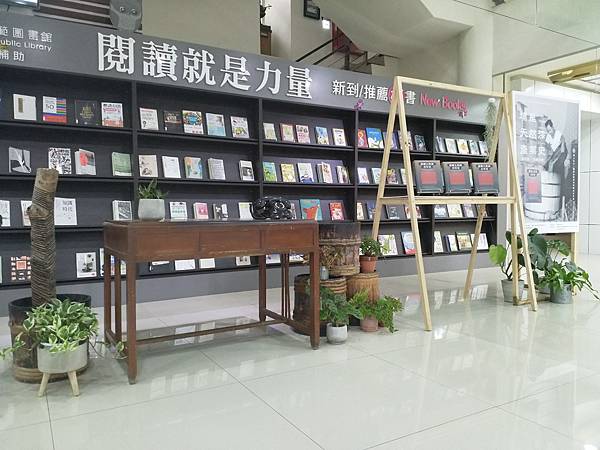
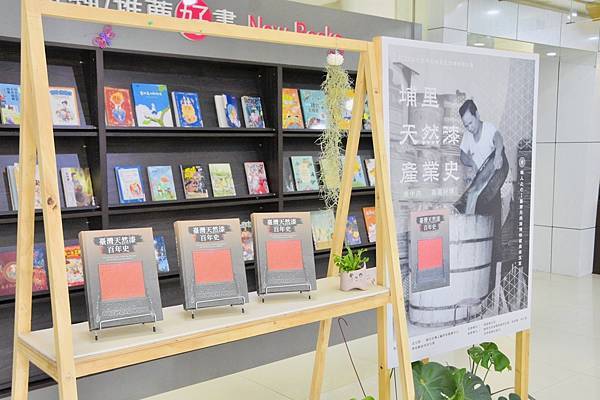
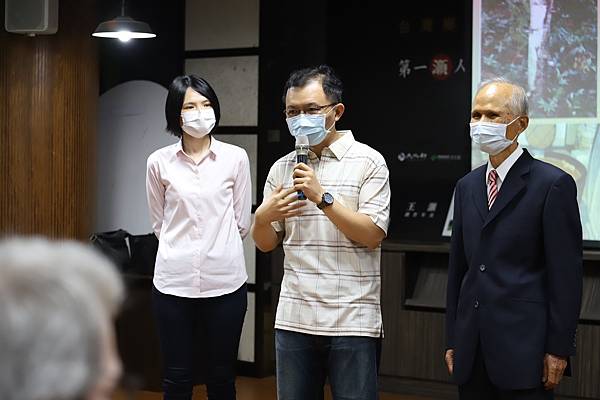
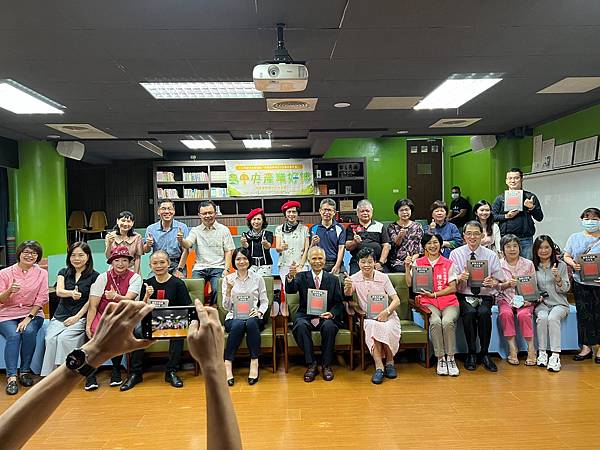
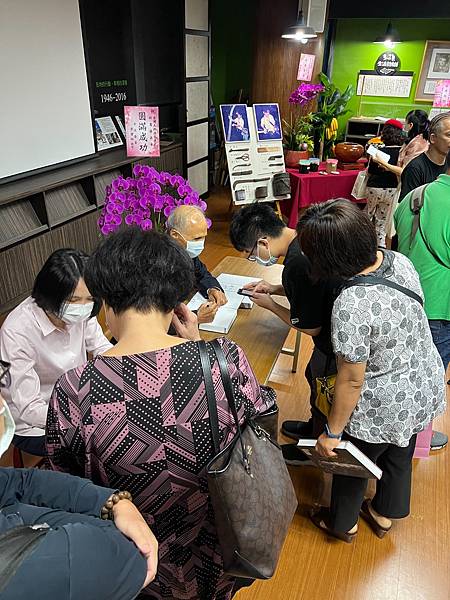
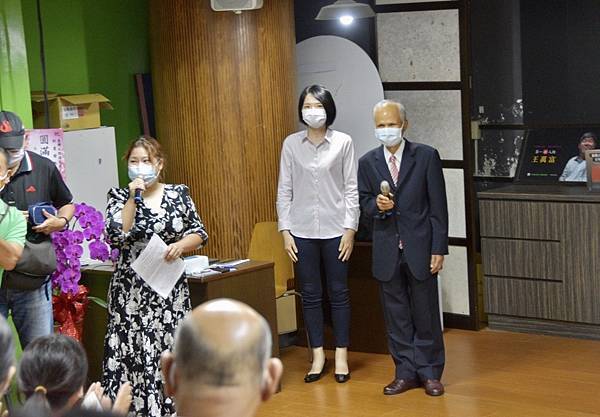
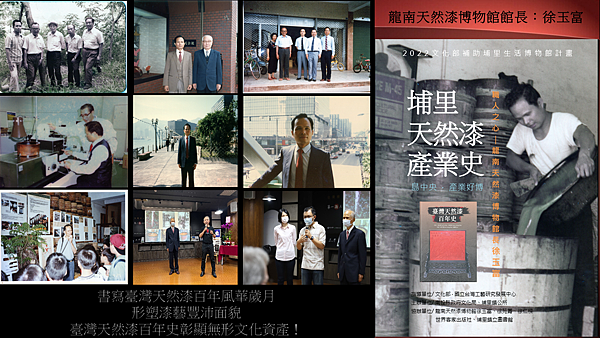
臺灣天然漆百年史 徐玉富 徐苑菁 著
Hundred Years’ History of Taiwan Lacquer.
Cent ans d'histoire de la laque de Taïwan.
Authors: Yu-Fu Hsu & Yuan-Ching Hsu
文∕徐苑菁 Article By Yuan-Ching Hsu in July 2022.
#國粹
#quintessence
館藏《臺灣天然漆百年史》的圖書館:
世界圖書館 The World Library:
德國柏林國家圖書館 Staatsbibliothek zu Berlin:
https://lbssbb.gbv.de/PPN?PPN=1866231936
經得起時間嚴厲檢驗的「臺灣天然漆百年史」,很榮幸的收藏於「德國柏林國家圖書館 Staatsbibliothek zu Berlin」,本書持續在全球著名圖書館發光發熱永流傳,讓世界看見台灣。😃👍📖
美國國家圖書館 United States Library of Congress (LOC). :https://lccn.loc.gov/2022401319
國際日本文化研究中心圖書館:https://toshonin.nichibun.ac.jp/webopac/BB10570439
美國加州大學柏克萊分校圖書館 UC Berkeley Library:https://search.library.berkeley.edu/permalink/01UCS_BER/s4lks2/cdi_jndl_porta_oai_ndlsearch_ndl_go_jp_R100000136_I1130577121818324004
英屬哥倫比亞大學 UBC Library:https://resolve.library.ubc.ca/cgi-bin/catsearch?bid=12371562
北京大學圖書館(索書號 TQ637/5 ):https://go.exlibris.link/9Z3pv5cn
中國國家圖書館:X2023\TQ63\1\南區臺港澳文獻閱覽室館藏\台港圖書東406。臺灣圖書館 Taiwan Library:
國家圖書館
中央研究院圖書館(臺灣史研究所)
國立自然科學博物館圖書館
臺北市立圖書館:總館/道藩/建成/西中 https://book.tpml.edu.tw/bookDetail/827503
新北市立圖書館
桃園市立圖書館:https://webpac.typl.gov.tw/bookDetail/2448760
宜蘭縣公共圖書館宜蘭縣史館/閱覽區
國立臺灣大學圖書館 National Taiwan University Library:https://ntu.primo.exlibrisgroup.com/permalink/886NTU_INST/14poklj/alma991039026777404786
國立清華大學圖書館:https://nthu.primo.exlibrisgroup.com/permalink/886UST_NTHU/vaplfb/alma9957377763506774
國立陽明交通大學圖書館 | NYCU Library:https://nycu.primo.exlibrisgroup.com/permalink/886UST_NYCU/1uq600n/alma991003718295706772
國立東華大學圖書館
國立臺中教育大學圖書館:https://webpac.ntcu.edu.tw/bookDetail.do?id=513759
東海大學圖書館:https://webpac.lib.thu.edu.tw/bookDetail/1252465
靜宜大學蓋夏圖書館:https://webpacx.lib.pu.edu.tw/bookDetail/1693194
逢甲大學圖書館
南投縣政府公共圖書館:縣史館/文化局/埔里館
客委會客家文化發展中心圖書資料中心
臺灣天然漆百年史繪本故事:博物館漆畫歷險 The adventures of lacquer painting in museum,徐苑菁編著。
臺北市立圖書館總館兒童室.小小世界外文圖書館
https://book.tpml.edu.tw/bookDetail/472792
桃園市立圖書館新總館/親子閱覽區、平鎮分館/兒童室
https://webpac.typl.gov.tw/bookDetail/2179103
基隆市文化局圖書館兒童室
宜蘭縣公共圖書館冬山鄉立圖書館冬山館/冬山館兒童區
元智大學圖書館總館
臺灣天然漆百年史繪本故事:漆童話 : 天使的眼淚 Lacquer fairy tale : the angel’s tears 徐苑菁編著
國立臺灣圖書館:
https://cis2.ntl.edu.tw/webpac/detail/654331/?index=1
桃園市立圖書館新總館/一般館藏區:
https://webpac.typl.gov.tw/bookDetail/2185505
E-mail:longnanlacquer@gmail.com富有臺灣客家特色的「龍南天然漆博物館」守護國家的歷史及文化寶藏《臺灣天然漆百年史》,將臺灣古老且極其重要的漆歷史和漆文化保存下來,作者敬邀您透過閱讀進入臺灣漆百年史的時光隧道,從字裡行間探索美麗精采的百年臺灣漆歷史文化故事:臺灣漆藝文化史起源自800多年前的臺東漆樹及東臺原住民族、清治時代的大稻埕漆產業與福爾摩沙台灣茶漆器茶箱風靡歐美、日治時代華麗精緻的臺灣火車漆工藝、臺灣最宏偉壯麗的漆藝總統府舉辦盛大的臺灣博覽會展覽臺灣漆器、大正6年(1917)以來開創臺灣漆樹種植與天然漆產業史之新頁,「臺灣國產漆」外銷全世界,為臺灣創造了驚人龐大的經濟效益並深具客家特色與歷史文化價值。
《臺灣天然漆百年史》記載八百多年的「臺灣漆」歷史文化,以多元視角:台灣的歷史、文化、人文社會科學、自然科學、物理、化學、美學工藝、娛樂、醫藥等方位呈現「臺灣漆」,期待讓台灣人及世界認識瞭解、看見即將消逝的「臺灣漆」。「臺灣漆史」即「臺灣史」,「臺灣漆Taiwan Lacquer」全面深刻的影響著每一位臺灣人,身為臺灣人的您,絕對不能錯過!
《臺灣天然漆百年史》徐玉富、徐苑菁 著,2013年5月~2022年7月完成,2022年7月全彩精裝隆重出版上市,出版社:世界客家出版社,封面設計:芊喜文化 楊雅媖,敬邀蒞臨民國111年(2022)9月3日新書發表會!精采影片歡迎踴躍分享:https://youtu.be/ctiAHOQsLes
The book “One Hundred Years of Natural Lacquer in Taiwan” Witnesses and Preserves the Cultural Assets of Taiwan’s Natural Lacquer Industry- Life- Liberty Times Newsletter:https://taiwan.postsen.com/local/19581/The-book-One-Hundred-Years-of-Natural-Lacquer-in-Taiwan-Witnesses-and-Preserves-the-Cultural-Assets-of-Taiwan%E2%80%99s-Natural-Lacquer-Industry--Life--Liberty-Times-Newsletter.html
書寫臺灣天然漆百年風華歲月,形塑漆藝豐沛面貌,《臺灣天然漆百年史》新書彰顯無形文化資產【中華民國文化部】:https://www.moc.gov.tw/information_250_147831.html
《臺灣天然漆百年史》館藏於匯聚臺灣及亞洲的歷史研究、文化、思潮的藏書寶庫「中研院人文社會科學聯合圖書館 Joint Library of Humanities and Social Sciences, Academia Sinica Library」,新書展示中(索書號:465.609 2813 2022):https://hslib.sinica.edu.tw
《台灣天然漆百年史》專書 見證與保存台灣天然漆產業文化財:https://news.ltn.com.tw/news/life/breakingnews/4047079
【藝術文化】《臺灣天然漆百年史》發表,徐玉富復振漆藝文化:https://art.ltn.com.tw/article/paper/1538241?fbclid=IwAR0OZmLNRPt-ouOzFC9n2b4jyXpTwgUuZP1T_sHRLKgWNyI7KJHPh-ZasCY
《臺灣天然漆百年史》盼新書傳承文化【華視台語新聞20220908】:https://news.cts.com.tw/cts/local/202209/202209082091461.html
《臺灣天然漆百年史》新書發表 認識埔里產業【客家新聞20220903】:https://youtu.be/78VphWFnuAc
徐玉富與家人共蒐資料 記錄臺灣天然漆史【客家新聞20220818】:https://youtu.be/c4pXSQImr5s
博客來–臺灣天然漆百年史:https://www.books.com.tw/products/0010933038?sloc=main
三民網路書店–臺灣天然漆百年史:https://www.sanmin.com.tw/Product/index/010640721
金石堂–臺灣天然漆百年史:https://www.kingstone.com.tw/basic/2014650005955/?zone=book&lid=search&actid=WISE
台灣e店–臺灣天然漆百年史:http://www.taiouan.com.tw/catalog/product_info.php?products_id=23220
哈台館國際書店–臺灣天然漆百年史:https://tplaza.com.au/shop/books/humanity/isbn9789869908115
臺灣天然漆百年史 History of Taiwan Lacquer 影片製作:徐苑菁 Yuan-Ching Hsu,
精華版:https://youtu.be/ctiAHOQsLes
簡史版:https://youtu.be/z7JHm85U6MQ
2022年「看見臺灣漆百年史」,「臺灣漆史」即「臺灣史」!
- 800多年前達悟族(Tao People)的漆拼板舟(Lacquered Canoes)、臺東漆樹與東臺原住民族(Taiwan Indigenous People)漆工藝文化史。台灣原住民朋友們:達悟族、阿美族、排灣族、卑南族、…,還記得祖先留下來的百年漆文化嗎?遺忘、失傳了?沒關係,《臺灣天然漆百年史》為您找回珍貴的漆寶藏,讓每位原住民朋友們能夠繼續向兒孫們述說著800多年前發生在臺灣這塊土地上卻已經消失的漆故事,讓東臺原住民族百年漆工藝文化史能夠源遠流長,代代相傳。
- 您知道百年前,漆器茶箱畫師手繪出美麗臺灣風情的漆器茶箱伴隨著風靡歐美的福爾摩沙臺灣茶(Formosa Taiwan Tea)飄香海外的迷人故事嗎?
- 身為臺灣人,您知道百年前臺灣人搭乘的華麗火車是手工髹塗天然漆的嗎?
- 身為臺灣人,您知道宏偉壯麗的中華民國臺灣總統府是手工髹塗天然漆的嗎?您知道漆塗的中華民國臺灣總統府舉辦盛大的台灣博覽會展覽台灣漆器嗎?
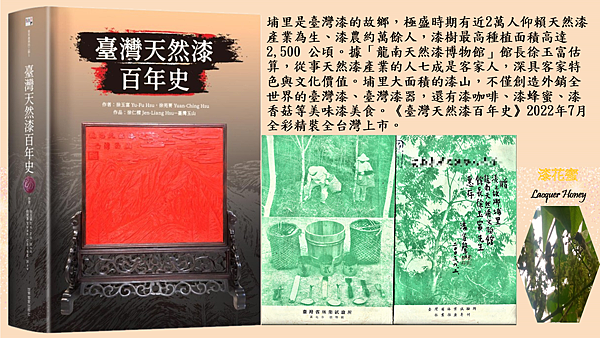
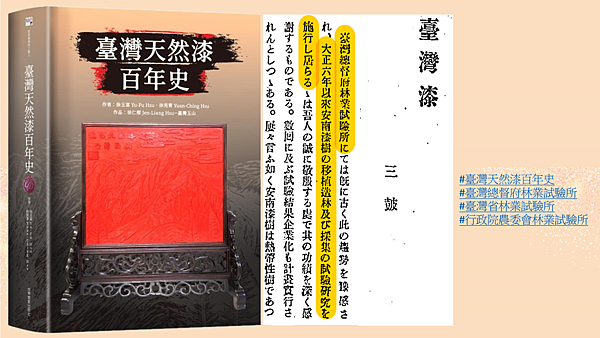
臺灣客家漆工藝文化產業史【「臺灣殖漆株式會社」社長三皷發表的著作《安南漆と臺灣漆》記載:「臺灣總督府林業試驗所」大正6年(1917)以來施行安南漆樹的移植造林及採集的試驗研究,開創臺灣漆樹種植與天然漆產業史之新頁,「臺灣國產漆」外銷全世界,為臺灣創造了驚人龐大的經濟效益並深具客家特色與歷史文化價值。】、臺灣原住民族漆工藝文化史、臺灣閩南式大稻埕漆產業、臺灣火車漆工藝百年史—華麗精緻的臺灣漆器火車列車全列車手工髹塗天然漆、手工髹塗天然漆的宏偉壯麗中華民國臺灣總統府盛大舉辦臺灣博覽會展覽臺灣漆器…,《臺灣天然漆百年史》歷經10年嚴謹周密的調查研究、蒐集整合資料,即將於2022年7月隆重上市。您知道身為臺灣人卻不知道已經消逝的漆歷史嗎?《臺灣天然漆百年史》書籍暨影片將臺灣古老且極其重要的漆歷史和漆文化保存下來,再次賦予強勁的生命力,豐富多元的人文科學知識:歷史、文學、科學、文化、藝術、創意、設計…等集於一書,透過閱讀將臺灣珍貴、極富特色的漆寶藏傳遞讓更多人知道。期待你我一起進入臺灣漆百年史的時光隧道,從字裡行間探索其中之奧祕,並且化腐朽為神奇,創造出各種的可能性,繼續為臺灣漆文化注入源源不絕的活水,美麗的百年臺灣漆歷史文化故事恆久流傳,發揚光大!
「臺灣漆史」即「臺灣史」,800多年來實際發生在臺灣這片土地上,對臺灣人—曾經努力貢獻於百年臺灣漆歷史文化產業的「臺灣原住民族漆工藝文化史」、「臺灣閩南大稻埕漆產業與福爾摩沙台灣茶美麗多變的漆器茶箱」、「臺灣青年團植漆運動(漆山奉仕作業)」、「臺灣客家菁英與龍南天然漆博物館保存延續臺灣天然漆百年史」、「漆塗的中華民國臺灣總統府盛大舉辦台灣博覽會展示台灣漆器」…這些至關重要且珍貴的百年臺灣漆歷史,是世界上獨一無二、無與倫比的百年臺灣漆文化歷史,最具臺灣價值與精神、與臺灣全體人民最切身相關的「百年臺灣漆歷史文化財」隨著歲月與環境的變遷,不復可見:臺灣人民和族群間(原住民族、閩南大稻埕、客家青年菁英、臺灣青年團...等)的百年臺灣漆工藝文化史、百年前臺灣人民每天搭乘的漆器火車、臺灣人民的漆塗總統府盛大舉辦臺灣博覽會展覽臺灣漆器,更遑論「保存臺灣漆文化」與「推廣台灣漆文化」!

「漆塗的中華民國臺灣總統府」是臺灣最宏偉壯麗的漆藝作品暨漆藝總統府盛大舉辦臺灣博覽會展覽臺灣漆器、臺灣火車以專業的漆工藝技法全列車手工髹塗天然漆、華麗裝飾,身為臺灣人的您知道這些與我們切身相關的漆歷史嗎?「歷史」是文化傳承、推廣、發揚光大的「根源」及「依據」,臺灣本土800多年長、極富臺灣多元人文特色(原住民族、閩南大稻埕、客家青年菁英、臺灣青年團...等)、臺灣價值和精神的百年臺灣漆歷史文化產業,隨著歲月與環境的變遷,800多年長、博大精深的「百年臺灣本土漆工藝文化史」就在臺灣本土漸漸地「被遺忘、被消失!」。如此重要的「百年臺灣漆歷史文化財」發展至此,令人不勝唏噓!
有鑑於此,2022年《臺灣天然漆百年史》作者:徐玉富 Yu-Fu Hsu、徐苑菁 Yuan-Ching Hsu,二位作者歷經至少10年(2013~2022)的長時間全面嚴謹周密的調查研究、蒐集整合資料,從臺灣的歷史學、人類學、民族學及政經、文化藝術、教育、生物科技、國防、產業發展…等的角度(Taiwan Lacquer History, Anthropology and Ethnology: Indigenous People, Hokkien Dadaocheng, Hakka People, Taiwan Youth League, Political Economy, Culture, Art, Education, Biochemistry, National Defense…all kinds of fields of Taiwan.),詳實記錄好幾個世代的臺灣人累積留下的珍貴「臺灣漆」歷史、文化、藝術、產業發展的軌跡,目前追溯至800多年前,一一真實揭露「百年臺灣漆工藝文化產業史」的全貌,2022年「看見臺灣漆百年史」,「臺灣漆史」即「臺灣史」!《臺灣天然漆百年史》不僅僅是關於臺灣漆、漆器和漆藝的書,更是台灣從遠古至今的歷史,全方位闡述並詳實記錄台灣漆的歷史,紮實完整的內容,提供各個領域的專家學者、研究人員、一般讀者最多元豐富的資訊。敬邀有興趣研究瞭解「臺灣漆史」及「臺灣史」的本國或外國人士閱讀,透過本書看見「臺灣漆 Taiwan Lacquer」。「臺灣漆史」即「臺灣史」,「臺灣漆Taiwan Lacquer」全面深刻的影響著每一位臺灣人,身為臺灣人的您,絕對不能錯過!作者徐苑菁 Yuan-Ching Hsu 期待《臺灣天然漆百年史》的每一位讀者都能成為說故事高手,將精采的臺灣漆百年歷史文化故事傳給下一代,讓臺灣的孩子們在多元漆文化的腦力激盪下,啟發無限的想像力與創造力,每一位孩子都能成為傑出的臺灣漆藝術家。
The most beautiful island with multiple cultural traditions and arts in the world, it’s Formosa Taiwan!
“The History of Taiwan Lacquer” is “The History of Taiwan” that is the most important history to Taiwan for more than 800 years, why has been completely disappeared, ignored and underappreciated?
What Happened Today In History of Taiwan Lacquer?
The authors of Hundred Years’ History of Taiwan Lacquer, Yu-Fu Hsu and Yuan-Ching Hsu, both of us spent more than ten years completing recording and revealing the real history of Taiwan lacquer, involving Anthropology, Ethnology, History, Politics, Economics, Education, Culture, Art, Biochemistry, National Defense…etc. all kinds of professional fields. Hundred Years’ History of Taiwan Lacquer is the most important cultural property of Taiwan.
- 臺灣漆藝文化史起源自800多年前的達悟族(Tao People)漆拼板舟(Lacquered Canoes),台東漆樹、台灣漆藝與台灣原住民族:The Origins of Cultural History of Taiwan Lacquer Art is Lacquered Canoes of Tao People coating and decorating with sap of Taitung Lacquer Trees. Taitung Lacquer Trees, Taiwan Lacquer Art and Taiwan Indigenous People.
- 清治時代臺灣閩南大稻埕的漆產業、漆器茶箱與福爾摩沙台灣茶:Lacquer Industries of Hokkien Dadaocheng, Lacquered Tea Boxes and Formosa Taiwan Tea during Qing Dynasty Rule.
- 日治時代臺灣總督府推行臺灣漆國策產業:最大的行動漆藝作品—漆器火車列車,漆藝實業工業教育,「臺灣總督府中央研究所林業部」與「臺灣殖漆株式會社」合作建設與分析臺灣漆,臺灣青年團漆山奉仕作業:The Governor-General of Taiwan implemented National Policy of Taiwan Lacquer: The largest moveable lacquer art crafts of Taiwan are lacquered trains and rails, Taiwan Technology and Industrial Education of Lacquer Art, The Department of Forestry of The Central Research Institute of Taiwan Governor-General cooperated with The Taiwanese Lacquer Trees & Industry Corporation for Establishment and Analysis of Taiwan Lacquer, Taiwan Youth League planted Taiwan Lacquer Trees on the Lacquer Mountains during the Japanese period.
- 臺灣最宏偉壯麗的漆藝作品暨臺灣博覽會漆器展售中心—漆塗臺灣總統府:The Tremendous Lacquer Art Craft of Taiwan as well as The Largest and Greatest Taiwan Exhibition Center of Taiwan Lacquer is Lacquered Taiwan Presidential Office.
- 富有臺灣客家特色的「龍南天然漆博物館」守護國家的歷史及文化寶藏—臺灣天然漆百年史:Hakka Cultural Characteristics of Long Nan Museum of Natural Lacquer Wares protects historical and cultural property of Taiwan, Hundred Years’ History of Taiwan Lacquer.
內容簡介
時至今日,位於埔里當地的「龍南天然漆博物館」,仍保存當時天然漆的製作器具、相關文物和漆器藝術品,館長徐玉富先生與徐苑菁父女更共同出版了《臺灣天然漆百年史》一書,該書除了將「天然漆」在將臺灣的開發、種植、造林、製作和外銷歷史沿革與發展,做詳細敘述外,並對天然漆的特性,藝術創作,物件都做了詳實寫照,探索精采的百年臺灣天然漆藝術與文化必讀史資料。
該書對始自臺灣800多年前雅美(達悟)族漆拼板舟以來,天然漆樹及東臺原住民族、清治時期漆產業(1683~1895年)、日治時期漆產業(1895~1945年)、臺灣煉漆廠、臺灣漆文化的推進;從清治時代的大稻埕漆產業與福爾摩沙台灣茶漆器茶箱風靡歐美、日治時代華麗精緻的臺灣火車漆工藝、臺灣最宏偉壯麗的漆藝、總統府舉辦盛大的臺灣博覽會展覽臺灣漆器、大正6年(1917)以來開創臺灣漆樹種植與天然漆產業史之新頁,「臺灣國產漆」外銷全世界,為臺灣創造了驚人龐大的經濟效益並深具客家特色與歷史文化價值,更對天然漆的主要成分及其作用,採漆故事與徐館長家族漆業發展史等做了全面性深入的探討,是一部臺灣史的百科全書。
「臺灣漆史」即「臺灣史」,「臺灣漆Taiwan Lacquer」全面深刻的影響著每一位臺灣人,身為臺灣人的您,絕對不能錯過!
《臺灣天然漆百年史》作者:徐玉富 Yu-Fu Hsu、徐苑菁 Yuan-Ching Hsu
#臺灣天然漆百年史
#台灣漆百年史
#台灣漆器百年史
#台灣漆藝百年史
#台灣漆工藝百年史
#Taiwan Lacquer
#Long Nan Lacquer
#臺灣國寶八百多年臺灣漆史
#臺灣漆傳遞祖先世世代代古老的智慧與多元的文化
#臺東漆樹與東臺原住民族(Taiwan Indigenous People)漆工藝文化史
#台灣原住民族與台灣漆工藝文化史的起源及故鄉
#Formosa Tea 福爾摩沙 臺灣茶 台灣茶
#Formosa Tea and Lacquered Tea Boxes.
#福爾摩沙臺灣茶與美麗多變的漆器茶箱飄香海外風靡歐美
#百年臺灣漆與臺灣茶的歷史文化藝術
#大稻埕臺灣漆與臺灣茶的歷史文化產業
#「臺灣總督府林業試驗所」大正6年(1917)以來施行安南漆樹的移植造林及採集的試驗研究。
#龍南天然漆博物館守護傳承臺灣漆文化產業與臺灣漆百年史
#龍南守護傳承臺灣客家漆文化產業史
#臺灣漆業輸出股份有限公司
#龍南天然漆博物館(龍南漆器 Long Nan Lacquer)
#臺灣漆的故鄉在埔里
#蓮華池藥用植物試驗地
#臺灣總督府大力推廣臺灣漆文化
#臺灣總督府立法保護植漆獎勵政策
#臺灣總督府立法推行漆藝實業工業教育
#臺灣殖漆株式會社
#銅鑼漆精製工場
#國策產業臺灣漆
#臺灣青年團與國策產業臺灣漆
#臺灣青年團植漆運動(漆山奉仕作業)
#Taiwan Lacquered Trains
#臺灣鐵道部漆塗工場暨漆器倉庫
#華麗精緻的臺灣漆器火車列車全列車手工髹塗天然漆
#台灣火車漆工藝文化百年史華麗展現台灣漆器火車列車
#中華民國台灣總統府宏偉壯麗的漆藝總統府盛大舉辦台灣博覽會展現台灣漆器
#總督府盛大舉辦臺灣博覽會展示臺灣漆器
#總統府盛大舉辦臺灣博覽會展示臺灣漆器
#Lacquered Taiwan Presidential Office.
#Taiwan Exhibitions of Taiwan Lacquer.
#臺北大稻埕漆文化產業百年史
#臺北興盛的漆器文化
#基隆和宜蘭漆文化
#桃園漆文化
#新竹漆文化
#苗栗銅鑼漆文化產業史
#臺中漆文化產業史
#彰化漆文化
#臺灣漆的故鄉在埔里
#臺灣漆咖啡
#臺灣漆蜂蜜
#臺灣漆香菇
#臺灣漆百年歷史文化財
#臺灣天然漆百年史文化園區
#龍南天然漆博物館守護傳承臺灣漆文化產業與臺灣漆百年史
#雲林漆文化
#嘉義漆文化
#臺南漆文化產業史
#臺南玉井漆文化產業史
#臺南龍崎漆文化
#臺南關廟漆文化
#高雄漆文化
#屏東恆春漆文化
#臺東漆文化
#花蓮漆文化
#根努夷Kenuy
#臺東漆樹與東臺原住民族(Taiwan Indigenous People)漆工藝文化史
#台灣原住民族與台灣漆工藝文化史的起源及故鄉
#臺灣原住民族漆工藝文化史
#蘭嶼達悟族船漆工藝文化史
#臺東原住民族漆工藝文化史
#花蓮原住民族漆工藝文化史
#澎湖漆文化
#漆塗臺灣總統府
#漆塗中華民國臺灣總統府
#手工髹塗天然漆的臺灣總統府
#手工髹塗天然漆的臺灣總統府與臺灣漆
#臺灣總統贈龍南漆器予友邦總理
#臺灣總統暨副總統與龍南漆器
#國立故宮博物院典藏展示中華漆器歷史古文物
#國立故宮博物院典藏展示龍南漆器之清代剔紅花卉小圓盒
#中華民國總統蔣介石Chiang Kai Shek
#中華人民共和國國務院總理周恩來四條件事 Zhou Enlai’s Four Conditions.
#周四條件しゅうよんじょうけん
#漆陶兵馬俑 Lacquered Terracotta Army
#精采絕倫的臺灣天然漆百年史2022年7月隆重上市
徐玉富學經歷:承續徐氏客家家族百年臺灣漆產業,從年少至今與世界級學者專家專業研究及鑑定、提升漆品質;民國77年成立「龍南天然漆博物館」推廣臺灣漆文化並擔任館長至今;民國87年獲聘「南投地方法院」調解委員至今;民國96年獲聘「行政院客家委員會」諮詢委員至今;民國96年(2007)「龍南」徐仁樑榮獲臺北「國立故宮博物院」典藏剔紅漆器、民國98年3月15日「國立故宮博物院」院長周功鑫博士帶領一級主管參觀「龍南天然漆博物館」;民國105年2月19日「日本石川縣輪島市議會拓政會—臺灣友好交流團」議長、議員共11位貴賓,透過外交部與「龍南天然漆博物館」交流;民國105年(2016)4月14日法國羅浮宮(Musée du Louvre)繪畫修護專員蒞臨參訪。民國105年5月25日,館長徐玉富收到來自法國的感謝函:由衷感謝「龍南天然漆博物館」將傳承六代以上的寶貴經驗分享,期待未來彼此能繼續交流互動。
徐苑菁學經歷:大學時榮獲全國大專運賽女子乙組一萬公尺長跑第五名;大學畢業後在新竹科學園區的科技公司歷練,協助歐、美、日國際大廠的客戶提升科技產品的品質;2013年5月攜手「龍南天然漆博物館」館長徐玉富守護傳承百年臺灣漆歷史與文化,開始調查研究並記錄寫作「臺灣天然漆百年史」;在「龍南天然漆博物館」為外國遊客導覽解說臺灣漆的歷史與文化,將臺灣漆百年歷史文化推向國際;同時於研究所進修碩士。
徐苑菁記錄「臺灣漆百年歷史文化」的著作:2016年出版《博物館漆畫歷險 The Adventures of Lacquer Painting In Museum》、2017年出版《漆童話:天使的眼淚 Lacquer Fairy Tale: The Angel’s Tears》、2022年出版《臺灣天然漆百年史》Hundred Years’ History of Taiwan Lacquer. 徐玉富、徐苑菁。
百年臺灣漆歷史文化產業館「龍南天然漆博物館」網站:
龍南天然漆博物館臉書:www.facebook.com/longnanlacquer
龍南天然漆博物館頻道:www.youtube.com/c/龍南天然漆博物館


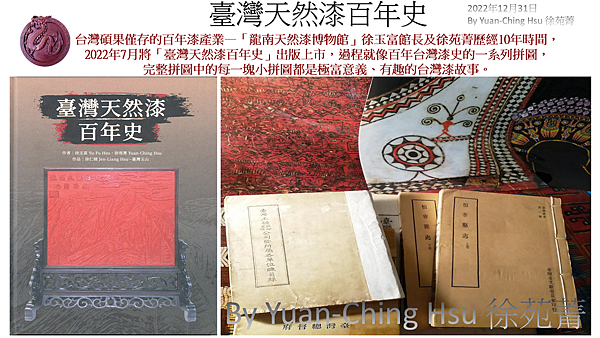

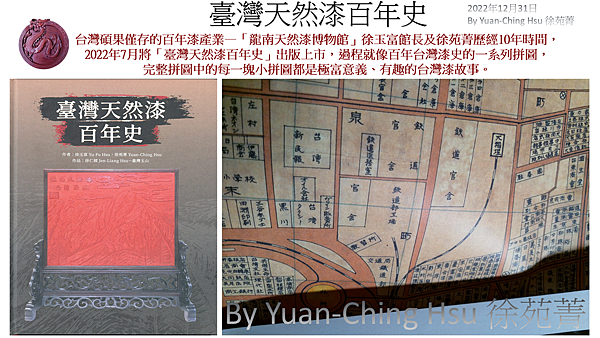
臺灣天然漆發展史
序言
臺灣天然漆藝產業發展始於明末清初、清治時期(1683~1895),大批的移民從大陸渡海來臺,初期的臺灣移民社會,因為日常生活及信仰需求,漆器工藝開始發展,匠師們身懷故鄉特殊技術,造就鹿港、大溪的漆藝傢俱產業百年風華,臺北市大稻埕煉漆業繁榮,開拓全臺供給漆產業內需。
日治時期、1895年臺灣成為日本殖民地後,臺灣總督府積極推廣漆藝、舉辦展覽,荒井泰治、山中公發展漆藝,民政部下設置殖產局經營臺灣林業、1918年臺灣總督府殖產局林業試驗場從日本和越南兩地引進漆種籽,在氣侯溫和、土質肥沃、雨水充沛的臺中州新高郡魚池庄蓮華池藥用植物栽培試驗地試種,安南漆繁殖成功,並於1926年、1929年採收漆液,株式會社齋藤漆店於1929年設立漆樹造林部研究所,在銅鑼大規模種植臺灣安南漆樹造林,1936年夏季採漆、臺灣漆誕生,1940年設立臺灣殖漆株式會社,1942年設置臺灣第一座日式煉漆廠〝銅鑼漆精製工場〞達成漆國產化目標。
龍南天然漆博物館,是臺灣碩果僅存的漆產業,歷經徐家六代人的努力,每一代都付出極大的貢獻、努力打拼,典藏清治、日治、民國時期臺灣天然漆發展之漆器、煉漆原始文物及檔案多達數千件,1962年~64年臺灣安南漆品質、漆樹品種改良成功、獲得國際肯定,2002年嘉義大學教授 邱義源博士(現任校長),在龍南天然漆博物館舉辦天然漆抗癌發表會/日本漆藝傳統技法交流,同步與國際知名的美國化學會天然物期刊發表,榮獲日本雅虎2002年7月22日YAHOO JAPAN 世界の博物館,2007年12月榮獲臺北國立故宮博物院採購,仿故宮院藏『清代剔紅花卉小圓盒』一組。道出臺灣漆工藝的歷史,讓臺灣特有客家漆文化產業永續發展,是值得被學習、體驗的社區博物館。
臺灣政府文化部舉辦亞洲漆藝典藏展,讓臺灣漆藝發展更多元創新,參與國家臺灣、中國、日本、韓國、越南,亞洲漆藝精華、學術研究結晶盡在其中,展出地點分佈臺灣中部五個館,每件漆藝詳細標明規格、材質、製作工藝,為愛好者提供了可信的資料,有助於參觀者理解與鑑賞,讓每個人都能欣賞漆藝之美。
龍南天然漆博物館
館長 徐玉富 謹識
2017年6月
臺灣天然漆發展史,係臺灣的重要文化財,其中又以南投埔里的天然漆為主。1918年,由臺灣總督府引進越南安南漆樹,在魚池鄉蓮華池試驗所試驗種植,早年先於苗栗銅鑼地區推廣,爾後在埔里發展至巔峰。由於埔里地區盆地地形適合漆樹成長,民國40年大埔里地區以農業方式大量生產,開啟臺灣天然漆產業30年的黃金歲月,極盛時期有近2萬人仰賴天然漆產業為生、漆農約萬餘人,漆樹最高種植面積高達2,500公頃。據筆者估算,從事天然漆產業的人有七成是客家人,深具客家特色與文化價值。
民國45年徐阿龍承家族漆器事業,開始經營天然漆。民國48年與造林專家、前林業試驗所蓮華池分所技士葉阿裳合夥,篩選青種優良漆苗栽培,於土質肥沃之山坡地種植,配合埔里良好的氣候和充裕的水源等有利條件,漆樹快速成長。
民國47年(1958),日本受到中國貿易斷交之影響,一年天然漆需求量約572公噸,直接衝擊百分之八十依賴中國進口的日本生漆市場。日本政府和漆工界各大商社,紛紛派員到台灣購買生漆。翌年,台灣產生漆外銷日本,數量約50公噸,因台灣天然漆產量少,供不應求的情況下,生漆單價節節高升,從年初每公斤NTD$50~$60元,到年中價格暴漲至最高每公斤台幣NT$800元的天價。當年食米價:每斗7公斤約台幣NTD$20元,一般公務員月薪約新台幣NTD$200多元,相較之下,生漆單價實在高到非常驚人。大埔里地區生漆年產量約9公噸,數量雖然少,但利潤優渥,只要能採漆供應之生產者,收入皆相當豐厚可觀。因此吸引許多農民大量投入種植漆樹行列,天然漆產業迅速在埔里發展。
民國48年,台灣天然漆的價格有如黃金一般,帶給少數漆農、中盤商、貿易商高利潤;但是,一部分漆農與中盤商疏於品質管理,日本漆業界以最高價格買到不良的生漆,產生厭惡感,認定台灣漆品質惡劣、失去信心,為天然漆市場種下日後滯銷之隱憂。民國51年(1962),日商停止向台灣採購天然漆,生漆零出口,價格每公斤往下降到NTD$32元以下,跌入谷底,低於生產成本。
民國51年,徐阿龍種植的漆樹樹幹直徑已達10公分,準備採割漆液。由於漆樹成長太快,樹皮並不厚,漆樹樹葉進行光合作用,樹皮儲存漆汁,厚度沒有達到,漆汁就非常少。後來經詳細的研究與評估後,決定繼續採收。第四個月起,漆液收穫量打破紀錄,奇蹟似的暴增,比原來增加15倍之多。消息傳開,震撼天然漆市場、震驚大埔里地區及苗栗銅鑼鄉漆農,吸引銅鑼生漆業者遷徙到大埔里地區定居採割漆液收益或栽培漆樹林,民眾如雨後春筍般處處皆有,大量投資。埔里成為台灣最大生漆產地,漆市場從銅鑼轉移埔里。
民國52年,徐阿龍堅信埔里生漆品質良好、透明度比任何國家優良的信念,積極著手漆品質的改良,以挽救台灣天然漆的前途。由徐阿龍、徐葉秀妹、長子徐玉富以客家精神、犧牲經營法,從事漆研究、改良漆樹、改善採割漆工法、生漆品質分級等八項改革,以個人的力量,投入大量的精神與人力,將台灣漆樹品種、生漆品質改良成功。改良後,產量增加一倍,漆酚增多3%以上,漆乾燥快速,透明度優良。這對台灣天然漆產業與漆農們是極具意義的。
埔里的漆品質,在徐阿龍、徐玉富嚴格鑑定下,經過二年六個月的努力及犧牲,扭轉大局,從劣質轉變成優質。龍南秉持著品質優良的精神和信譽,打開日本的外銷市場,獲得日本漆業界的肯定及信任,認定台灣出產的天然漆品質確實非常優良,價格也便宜,回頭大量訂購生漆,條件是:天然漆輸出日本必須由徐阿龍檢驗合格的漆為限,蓋印「龍」字標章後,代表優質漆品質,方可輸出,否則拒絕訂購。
檢定合格的天然漆製品深受漆業界好評與喜愛,「龍南」立下台灣產生漆金字招牌,揚名國際,奠定日後出口順利之基礎,為國家賺進大量的外匯,內外銷市場接受優良產品,長達三十多年的輝煌時期。漆農恢復昔日信心,開始種植漆樹,漆產量漸漸增加。
台灣漆業界有數萬人〝吃漆仔乳長大的〞,龍南為了永續經營,進行漆液改質。由永瀨喜助老師、日本東京大學化工系教授熊野谿從博士、及取得東京大學博士學位的台灣大學教授陳劉旺老師,義務指導及研究漆化學成分,促進漆乾燥硬化,提升漆品質,如同日本、中國、韓國生產的漆主成分漆酚(Urushiol)相同品質:高硬度、乾燥快、透明度良好等。另外,嘉義大學生物科學院院長、現為嘉義大學校長邱義源博士,到埔里「龍南」拜訪,認識生漆依賴漆酶酵素乾燥,產生興趣,因而投入研究漆酵素,指導筆者研發增強漆酵素活性,促進生漆乾燥硬化,領導學術團隊研發天然漆抗癌療效及婦女美白化妝品等。
民國63年生漆年產量高達293公噸,其中半數外銷到日本,並造福國內大臺北市、新竹縣市、鹿港、大溪等地區數十萬人的重要高級家俱漆器產業,深受消費者喜好,並賺取龐大的外匯在案,埔里鎮堪稱臺灣天然漆的故鄉。可惜因時代變遷、社會經濟結構的改變,讓臺灣漆產業沒落。
天然漆產業在台灣歷經萌芽、璀璨與沒落,從19世紀到20世紀,一世紀的時間。受到層層的衝擊後,天然漆產業幾乎停擺。因為「使命」,和對漆的鍾情,在台灣漆業逐漸蕭條凋零的情形下,碩果僅存的只有「龍南天然漆博物館」徐家仍堅守著台灣漆產業,用生命以藝術的心繼續發揚保存。
民國77年(1988),筆者成立「龍南漆器文化館」,即今「龍南天然漆博物館」經營超過六代,保存下來的台灣天然漆文物,皆是原始文化資產,有百年的歷史,許多是世界獨一無二碩果僅存的無價之寶,例如:漆樹種植工具及培植法、採漆各式工具及採割工法、日治時期斎藤漆店的煉精漆桶佐倍式機械、各式漆桶(台灣檜木漆桶約5~6千個、濾漆大桶、製漆桶、25kg入台灣檜木漆桶)、濾漆工具、煉漆製造工具及煉漆技法、漆品質檢驗工具及檢驗法、漆包裝外銷工具、龍南漆器製作機械與廠房、漆藝創作等豐富經驗,與台灣百年天然漆產業文化發展史歷年珍貴文獻、台灣漆外銷出口文件及台灣漆學術研究文獻等資料逐一善加完整保存,為台灣天然漆文化留下一脈珍貴的薪火。進到「龍南天然漆博物館」,猶如走進台灣漆文化發展史的時光隧道,「龍南」六代與天然漆「如膠似漆」的情感,成為台灣天然漆風華再造中,一段動人的故事。
民國90年4月19日(週四),中華民國副總統呂秀蓮女士蒞臨「龍南天然漆博物館」指導,為台灣碩果僅存的台灣天然漆產業文化加油鼓勵、支持,惠顧訂購「高級純金蒔繪蓮花漆器木椀」前進總統府。
民國91年(2002)10月14日,嘉義大學校長邱義源博士、台灣大學醫學院醫事技術學研究所教授林○萍博士、成功大學化學系教授吳○琳博士,在「龍南天然漆博物館」舉辦「埔里天然漆新發現抗癌成份說明會/日本漆藝傳統技法交流」同步與國際知名的美國化學會ACS(American Chemical Society)天然物期刊(Journal of Natural Products)發表,受到國際學術界高度肯定。貴賓團:南投縣長林宗男等數十人,日本貴賓團:團長:蜷川彰博士等10位,蒞臨指導。
民國93年客委會主委葉菊蘭蒞臨參觀指導。民國93年11月22日客委會主委羅文嘉蒞臨,洽談建立「客家天然漆文化園區」,行政院農委會林業試驗所「蓮華池研究中心」主任黃○良同來協助。
民國94年6月15日「國立故宮博物院」委託製片張○華、導演侯○賢、三視多媒體團隊蒞臨拍攝採漆及製作剔紅漆器工法。
民國95年2月中國「揚州雕漆廠」廠長周○平蒞臨參觀指導。
民國96年10月26日「國立故宮博物院」展覽組長林○美等,向「龍南」訂購剔紅漆器,仿故宮院藏「清代剔紅花卉小圓盒」製作工序模型採購案,由徐仁樑承造。
民國98年3月15日,故宮博物院院長周功鑫博士率領了副院長及一級主管共28位貴賓蒞臨龍南天然漆博物館參觀,離去前還題字「以文會友、以友輔仁」與龍南共相勉勵。
民國105年(2016)2月19日(五)上午10點,日本石川縣輪島市議會台灣友好交流團成員透過外交部,由議長森正樹、拓政會代表中山勝等11位貴賓,率團來台參訪全台碩果僅存的龍南天然漆博物館,進行漆文化交流、了解埔里地區漆樹種植、天然漆的生產加工製作、漆器研發與行銷等現況,體驗台灣天然漆藝文化之美。
〝龍南天然漆博物館〞是臺灣碩果僅存的漆產業,百年博物館歷經徐家六代人的努力,每一代都付出極大的貢獻,努力打拼;但是,個人力量有限,缺少場地及克難展示,許多珍貴台灣漆文物多存放箱子裡,無法完整呈現給國人觀賞瞭解,發展台灣漆文化備受艱辛。倘若任由天然漆產業文化消滅,今後想觀賞活的台灣天然漆產業文化的人,只能透過電視或網路及漆藝館的煉漆工具,卻毫無生命力可言,政府責無旁貸,發展文化不能僅有硬體建設,看不見的軟實力才是賦予人們感動的重要角色!我衷心期盼上天保佑臺灣漆文化傳承使命能堅持下去,讓臺灣特有客家漆文化產業永續發展、風華再現。
本文發表於2017亞洲漆藝典藏展專輯暨國際研討會論文集
The role Taiwan played in the history of natural lacquer.
Bohdan Urbanowicz, 徐莉菁Regent Hsu, 徐苑菁Yuan-Ching Hsu
Introduction
End of Ming beginning of Qin Dynasty is where Taiwan natural lacquer starts to develop. 1683 ~ 1895 in this period skillful lacquered artisans migrated from China to Taiwan. The lacquer was required for religious statues, and daily commodities. The art of lacquered furniture industry developed in Lukang (鹿港) and Daxi (大溪) for hundreds of years. Tuatutia (大稻埕) a part of Taipei where was the center of refined lacquer business and supplied all Taiwan. Production of lacquer initiated in central Taiwan.
1895 Taiwan became a Colony of Japan or Japan occupied Taiwan, whatever it might be called Japanese were here. The current ruling Government enthusiastically promoted lacquer ware through exhibitions and other events. Especially Aray Taiji and Akira Yamanaka developed lacquer skills and organized many lacquer ware events. 1918 The Forestry Experimental Station under the aegis of the Regenerative and Products Bureau of the Governor General's Office (臺灣總督府殖產局林業試驗場) imported seeds from Japan and Vietnam that were planted in Yuzhi (魚池鄉) the Lienhuachih Medicinal Plants Cultivation Experiment Field (蓮華池藥用植物栽培試驗地). Annamite lacquer trees (Rhus succedanea L. var. dumoutieri Kudo & Matsura) were the winner. 1929 Saito Urushiten Co., creatred laboratory in Miauli Tongluo Village (苗栗銅鑼). For planting lacquer trees, concentrating on annamite lacquer trees (Rhus succedanea L. var. dumoutieri Kudo & Matsura). 1936 Summer, the sap was ready to collect, with this Taiwanese Lacquer Industry was born. 1940 Taiwanese Lacquer Trees Corporation was founded. 1942 Japanese style refined lacquer production was started and achieved the goals for lacquer nationalization; it was named Tongluo Lacquer Refinery Factory. It was first Taiwanese lacquer production.
Longnan Natural Lacquer museum and production is 6 gernerations old and the only survivor. Some of museums exhibits are reaching from Qing and Japanese Colonization times. Museum contains historical spectrum of tools as well trading and thousands lacquer related documents. 1962~ 1964 Longnan improved cultivar of Taiwan lacquer trees and high quality lacquer recognized internationally. 2002邱義源Dr. Chio Yu Ren Principle Jia Yi University, proved that natural lacquer fights cancer. The ACS(American Chemical Society) has posted research reports on Journal of Natural Products. 2002 July 22nd, Longnan was awarder "Museum of The World" by Yahoo Japan. 2007 December Taipei National Palace Museum requested from Longnan to create a replicas of Qing Dynasty carved lacquered flower box. Longnan preserves the artisan skills of Lacquer.
Taiwanese Government organized Asia Lacquer ware event. It brought new ideas. Participants were from Taiwan, China, Japan, Korea and Vietnam. In Taiwan there are 5 locations where art exhibits can be viewed. It includes description, material, and dimensions for letting natural lacquer art lovers to learn more about it.
Welcome to our Museum
Respectfully,
Yu-Fu Hsu, Director of Longnan Natural Lacquer Museum.
June 2017
The natural lacquer in Taiwan was a culture of its own. The natural lacquer of Lukan, Taiwan was appreciated even before Qin Dynasty.
In more recent history, starting at the beginning of 19 hundreds. More precisely 1918 Taiwanese Government foresaw a business opportunity in lacquer trees. To add this crucial resource, the Government (Governor-General's Office in Lien Hua Chih Research Center) has setup a laboratory a nursery for annamite lacquer trees (Rhus succedanea L. var. dumoutieri Kudo & Matsura) at first in Yuzhi (魚池鄉) a part of Nantou City. They chose a lily pound Lien Hua Chih (蓮華池) (the name designates as well location), to make first lacquer trees nursery. After that the test proceeded in Miaoli Tongluo Village (苗栗銅鑼).
Then after in 1956 Mr. A-Long-Hsu(Xu)(徐阿龍) a wise agricultural businessman (whose family until this day continue natural lacquer tradition) moved his family with the lacquer trees to the Puli(埔里) Valley. A city located in Nantou County. The only County in Taiwan, that is without access to open waters although the famous Sun-Moon Lake is nearby. Where they actually found their home on 2500 hectares of top soil. The perfect natural environment with reach soil contributed to the richness of the trees at the same production of lacquer. That arrangement started 30 golden years. At its peak it nourished about 20,000 people with over 10,000 lacquer farmers. 70% of the involved in that business were Hakka. You could say that Hakka people contributed or created the natural lacquer culture of Taiwan.
Interesting to say, with these trees also in Puli (埔里) Lacquer forest appeared ghosts, lots of ghost. At least it seemed for most of the town people. Needless to say, those were the hardworking people with lights attached on their heads, collecting tree sap at night at which point the tree veins are most open and are most productive that is just few grams from each tree. There was another obstacle; rain, lacquer and rain from business point of view do not mix at all.
In 1956 Mr. A-Long-Hsu(Xu)(徐阿龍) Inherited family business and turned into natural lacquer.
In 1958 the Japanese annual market called for 572 tons of natural lacquer from which 80% came from China. At that year China stop exporting to Japan. That fact created panic on the lacquer market. Japanese companies seek fulfillment in Taiwan at least partially. That was beginning of a beautiful friendship between Taiwan and Japan. At this very time the price of lacquer in half year sore drastically. From beginning of the year TWD$50~60/Kg all the way up to TWD$800/Kg. Civil servant earned monthly salary of TWD$200 and rice was priced at TWD$20 for 7kg.
Puli Produced about 9 Tons a year, with a significant profit which attracted more participants to bring their lands to the table.
In 1959 Mr. A-Long-Hsu(徐阿龍) seek advice from forestry specialist Mr. A-Sang-Ye (葉阿裳) (of Lien Hua Chih Research Center) to help expand the lacquer orchard by selecting the best tree seedlings and creating perfect cultivating environment. As a result they became partners
The "Gold Rush of Puli" suffered due to injected impurity to the lacquer by greediness of some people and improper management as a result it has effected the quality of the product. Causing in general lack of confidence in product and the Japanese were reluctant to continue business with Taiwan. This again has caused to drop down the demand for Taiwanese lacquer. Finally in 1962 Japanese seized all buying activities with Taiwan. That dramatically lowered the price to TWD$32/ Kilo. Eventually some farmers started to cut the trees and plant bin-lan(Taiwanese replacement for chewing gum), The only home that manage still selling a high quality lacquer to Japan was the Hsu(徐阿龍) family Long(龍)TM.
Few month later into 1962 the trees of Mr. A-Long-Hsu(徐阿龍) reached 10cm diameter. Unfortunately were not very productive. The quick growth was due to good nutrition casing the layer of tree trunks to be too close to each other and the bark too thin. Well at this point Mr. A-Long-Hsu(徐阿龍) came across a dilemma. "To cut or not To cut". Eventually he has chosen to keep tree and continue collecting whatever would come out from the poor trees. About four month later the trees has showed that they are not "ugly duckling" as presumed, but rather ..., well in appreciation for being kept alive offered a fifteen times more than ever a tree was able to produce. That broke the record. the news about this phenomenon spread very quickly and once it reached Miaoli all the hell broke loose. Most of the lacquerer farmers, businessmen with their investments and whoever could tag along start to move to Puli. That was rebirth of lacquer business in Puli making it a biggest Lacquer industry in Taiwan.
In 1963 Mr. A-Long-Hsu(徐阿龍) being bored with his achievement of purest lacquer in the world and the best quality. He started to work on further perfecting it.
Mr. A-Long-Hsu(徐阿龍) has involved his wife and his children in the business. All of them dedicated most of the time to the trees, often neglecting their health, personal and family responsibilities, which effects are still noticeable. Therefore, the dedication to keep the Taiwan Puli lacquer world recognition did come with a high price.
It is still necessary to share the Hsu 徐 secret with this world to ensure that the lacquer will not be lost. In this you can help as well as the governments and world wildlife organizations.
He studied the best way and technique to notch the trees with the least damage to them, he invested into understanding the trees them self. How they grow, what nutrition is the most beneficial and what makes them sad. If he had time he probably could write master theses about the lacquer trees from seeds to lacquer.
During his studies of the tree, he discovered the way to achieve increased quality of the lacquer as well as double the quantity of enzymes (台灣的漆酚) laccol by 3%. The perfection of the technique of cultivation of the tresses is very significant to the lacquer tree farmers as well to the business industry and to the Taiwan.
Evolution of Puli Natural lacquer Superiority
1. Cultivar improvement: Selecting the best seeds and right land location.
2. Improve skills to collect sap
a. The notch (for the seashell collector) should be 3 cm above ground to protect purity avoiding contamination by any debris falling into collecting containers
b. shift up the time to collect sap instead from 3am to start at midnight. Collect the containers move from 7am to 8am. It will increase the quantity, and the sun rays will help vaporize the moisture and increase the enzymes quantity.
3. Quality improvement:
a. prevent any contact with metal to avoid oxidation, which causes lacquer to blacken. The best would be a paper or wooden container.
b. any lacquer in collecting containers that is contaminated with water drops anything else cannot be placed together with rest of the collection. Lacquer that contacted with water may start fermentation process.
4. Strict control of export quality
a. High transparency, enzymes (laccol) minimum 64%
b. Every 20 kg bucket must weight 25Kg which includes 5kg as a business incentive.
c. Quality guarantee: which provides free exchange if customer is not satisfied.
It took about 2.5 years of strict supervisory to achieve the superior quality of lacquer. That helped Taiwan to win the reputation on Japanese market once again, nevertheless it came with conditions. It must be inspected by Mr. A-Long-Hsu(徐阿龍) and have burned on the container the dragon logo 龍, which represents Longnan龍南天然漆博物館.
Longnan became a Golden Brand for lacquer known not only in Taiwan but as well internationally. This has rebuilt a confidence to Taiwanese farmers as a result expends lacquer trees forest. International business brought substantial amount of money to Taiwan; unfortunately only lasted 30 years.
Ten thousands of people grew up on drinking lacquer milk. Many farmers and businessmen in region depended on Longnans knowledge of lacquer trees. Mr. Hsu徐 realizing that he needed to keep the art of lacquer to go on for as long it was possible. Hsu徐 has involved Nagaise Kityo chemistry professor in Tokyo University. Mr. Chen Lio Wan (陳劉旺) Professor at Taiwan University and graduated from Tokyo University. Their contribution to Longnan lacquer was to understand chemistry of lacquer. They helped to improve process of developing enzymes to match quality of Japan, Korea, or China. The drying speed, the transparency and hardening depends on enzymes. Principle of Jia-yi University Dr. Qiou Yi Ren paid visit to Longnan and lacquer enzymes attracted his interest. He started to research about the enzymes and how to improve activities of enzymes. Then he started research group on studying lacquer enzymes to fight cancer and benefit its patients. He extended this field to cosmetics.
In 1974 Taiwan produced 293 tons of lacquer; half of it was exported to Japan. It also benefit the furniture makers, artist in the area of Taipei, Shinchu, Lukan, DaShi; high quality furniture makers and businessmen.
Their products were exported, bringing financial satisfaction. Puli became the home town of Taiwan Natural Lacquer. With time and the society cultural changes, the appreciation of lacquer diminished, lowering the demand for it.
The period from 19th to 20th century reminds me of typical American hero / love story move plot. Hard working at the beginning, booming, falling, and after this rollercoaster. Like after thunder there was quiet in the lacquer field. Despite calm market Hsu family insisted to continue the culture of lacquer. From what it left they created a museum to preserve the important piece of Taiwanese and lacquer history for the future generation in hope that the lacquer will flourish once again.
In 1988 originally created a Longnan lacquer ware studio (later on gained the title of museum) that contains lacquer ware and all the tools used for lacquer production. It contained the treasures of 6 generations. The studio contained as well antique and unique lacquer ware art that is over 100years old. The spectrum of tools in the studio is the collection of the evolution of its development. as they were improving and adjusting to do the job. The main exhibits are tools to plant lacquer trees, to collect sap, notch the tree for extracting sap. Machine Sa Bai Siki to Ryou Ki Kai for refining lacquer. Variety of buckets to transport and store lacquer. around 5 to 6thousand hinoki (Cypress) buckets, bucket to filter lacquer and tools to filter, 25kg capacity Taiwanese hinoki buckets, apparatus to check quality of lacquer, packing tools including trademarks emblems. Machines to produce lacquer ware. The art production studio. Export documents, the analysis, research documents. Entering the museum it is like stepping back to ancient atmosphere of the time.
In 2001 April 19th the vice president Mrs. Lū Siù-liân(呂秀蓮) visited Longnan Natural Lacquer Museum. She expressed her support and admiration for the Museum. She was impressed about the Hsu family preserving of part Taiwanese culture. She acquired luxury, elegant set of lacquer ware with a pure gold accent. Through that gesture, she managed to introduce Longnan efforts to the presidential office.
In 2002 14th of October Longnan organized on its premises a meeting dedicated to Natural lacquer from Puli has a compound that can help fight cancer. Participants:
From Taiwan (some of the 10 participant):
吳培琳 Dr. Wu Pei Lin Chemistry professor from Chengong University,
林淑萍 Dr. Lin Shu Ping from Taiwan University Hospital.
邱義源Dr. Chio Yu Ren Principle Jia Yi University
Previous Nantou County Mayor 林宗男 Mr. Zon-Nan-Lin
From Japan (one of the 10 participants): 蜷川彰 Dr. Akira Ninagawa
The ACS(American Chemical Society) has posted research reports on Journal of Natural Products.
Longnan Honorable Visitors of 2004 and their titles at that time
In 2004 Hakka Association manager Mrs. 葉菊蘭.
2004 November 22nd Hakka Association Commissioners Mr. 羅文嘉 Lo Wen Jia proposed to build Hakka Natural Lacquer Center and Mr. 黃○良 Huang.
On 2005 June 15th Film producer Mr. 張○華 Jang and Director侯○賢 Hou Xiao Xien, (三視多媒體團隊) Media Team SanShi. On request of International Museum came to Longnan to film procedure about collecting the sap and producing lacquer ware.
On 2006 February China Lacquer Carving Lacquer factory CEO Mr. 周○平 came to visit Longnan.
2007 October 26th Taipei International Museum, order sets of lacquer ware, made by 徐仁樑it was replica of 「清代剔紅花卉小圓盒」 Qing Dynasty carved box.
2009 March 15th Manager of Taipei National Museum team of 28 people led by Dr. 周功鑫 Zhou Gon Xin at the end of the visit left a theme 「以文會友、以友輔仁」"Through culture to friendship, united make prosper"
2016 February 19th 10am from (日本石川縣) Japan Ishikawa Prefecture Congressman team(11 people) led by Manager森正樹Mori Masaki and 中山勝Masaru Nakayama, in association with Taiwan Foreign Affair came to learn from Longnan how to grow natural lacquer trees, production of lacquer ware and marketing.
龍南天然漆博物館 Longnan Natural lacquer Museum, is the strongest one out of the few that left in Taiwan preserving lacquer culture and business. Longnan is 6 generations old that is about 100 years of families dedication to the lacquer. Each generation contributed to the growth, nevertheless there is a limitation to full prosper. One of them is the space; it is not possible at this point with current resources to display all the treasure, for public eyes. This cripples Longnan to be fully functional. Another drawback is that in 2006 one of Longnans factories was burn down, until today the perpetrator was not identified.
As an Individual it is not easy to continue such treasure of Taiwan, which was developed by private hands without support of Government. At this moment, if there is no interest in preserving the natural lacquer. The culture, the skills and resources that were discovered over a century by hundreds of people. Then in the near future it can only be viewed in the archives, internet lost pages, and some videos. As I see the only hope is in God.
This article is published in 2017 ASIAN NATURAL LACQUER EXHIBITION & FORUM.

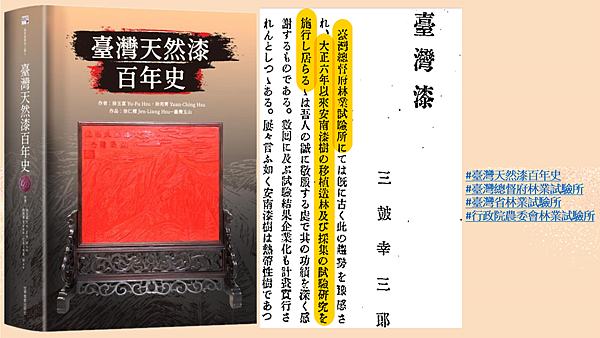
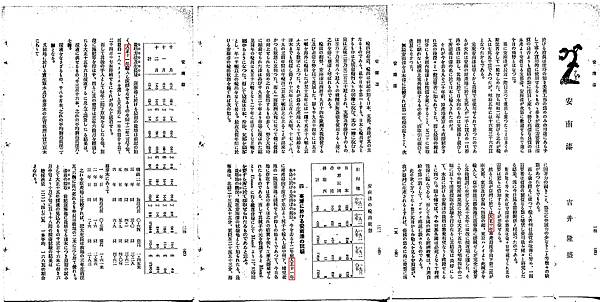





 留言列表
留言列表
